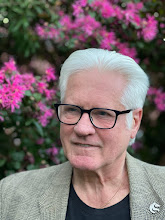You are warned about the vague spoilers.
Okay, I loved this movie, though it will not be for everyone. Most of the action consists of two long, epic, expertly directed road battles. The pace seldom lets up, and if this causes a problem it's just that the various crashes, gunshots, explosions, and hand-to-hand beatings take place with such unrelenting speed and density that you need to concentrate to keep up.
Mad Max: Fury Road is a quintessence of its franchise - think of the vehicular battle scenes in Mad Max II (aka The Road Warrior) and Mad Max Beyond Thunderdome dialed up to eleven.
Indeed, if this movie had appeared in the late 1980s we might have wondered what was the point. Although it is even better than its predecessors in its loud, catastrophic, metal-wrenching effects - all set against a stark, hot, dusty desert backdrop - there is a sense in which it would once have been simply more of the same, or even a kind of devolution. But appearing thirty years after Mad Max Beyond Thunderdome, Fury Road is not so much a repetition or a dumbing down as a brutally beautiful distillation.
Importantly, the movie stands on its own. Anything you need to know about the background is conveyed transparently enough, without a need to see any of the earlier instalments of the series. Thus, it's an entry point: younger viewers could watch it, then go back and enjoy the original three movies, treating them more or less as prequels.
The events of Fury Road could, indeed, take place at any time after the original Mad Max. I.e., there is little to suggest that they happen after the events of Mad Max Beyond Thunderdome: for all we know, they could happen even before Mad Max II, or between it and Beyond Thunderdome. This is not about further development of Max Rockatansky as a character so much as another example of Max getting caught up in a series of events in which he emerges as a culture hero - contributing to one of the new, more civilized societies that supersede the brutal epoch of warlords following a nuclear apocalypse triggered by warfare over oil.
If anything, Max seemed younger to me than he did in Beyond Thunderdome (though Mel Gibson was somewhat younger at the time than Tom Hardy is now). Messing things up for anyone who wants internal consistency and realism, it becomes clear that a considerable time (seemingly a couple of decades or more) has passed since the events of Mad Max... and yet, the hero does not seem much older. Never mind: it has never been crucial to this franchise that we are able to reconcile the larger framework of events in a literal way. More generally, the Mad Max franchise thrives on symbolism and visual aesthetics rather than any commitment to continuity.
As is now widely known, the plot of Fury Road involves an effort to rescue a handful of "wives" (basically sex slaves) of a crazy theocratic warlord, Immortan Joe (played by Hugh Keays-Burn, who also played the Toecutter in the original Mad Max). Immortan Joe is, more or less, the Australian desert's answer to Darth Vader.
The five beautiful, scantily-clad young women (scarcely, it appears, more than adolescent girls) are initially timid and helpless (not to mention more or less interchangeable) as spectacular battles are fought over possession of them. As events continue, however, they become much more than eye candy for the gaze of whoever is interested: they are gradually differentiated as individuals, while also being shown as pulling themselves together, doing their best to assist in the running battles, and gaining in determination, grit, and competence.
Charlize Theron co-stars as Imperator Furiosa, a high-ranking functionary for Immortan Joe who commandeers his massive "war rig" to transport herself and the wives to safety. Furiosa is a kickass strategist and warrior, though she is not a match for Max himself when they initially come to blows. That episode aside, it's refreshing to see such a formidable female character (think of the Australian desert's answer to Alien's Warrant Officer Ripley). Theron/Furiosa never quite steals the show from Hardy's impressive version of Mad Max, but she is a powerful, likewise impressive, off-sider for him.
Even more refreshing, perhaps, are the tough, brave women from whose clan Furiosa was stolen years before (when she was only a child). Just for once, in a Hollywood movie, we see women of middle (and older) years represented as competent planners, culture builders, and fighters.
Amongst it all, however, Max is the dominant figure. As in the previous movies, he is a complex, dangerous, yet essentially decent man: he is tortured by what he has seen and done in a terrifying past, extraordinarily competent in all the skills and ways needed for physical struggle and survival, and devastatingly destructive to his enemies. Again - as in the previous movies - his talents are all important in defeating the crazies and warlords, enabling a better society to come about. But (again, as in the earlier movies) he does not take part in the new social order for which he has been a catalyst and a liberator. As he edges off at the end, with barely an acknowledgment from the other survivors, he appears doomed to go on roaming the red-and-brown desert, finding sustenance where he can, and endlessly clashing with motorized barbarians and evildoers.
As I observed a decade ago, writing about Mad Max and the Mad Max franchise for The Greenwood Encyclopedia of Science Fiction and Fantasy, "The old civilization had gone, and there seems to be no place for such men in any new one that he has helped bring about."

No comments:
Post a Comment